Cookham (renamed Maidenhead in 1899), Berkshire
Up to 1834
A parliamentary report of 1777 reported that Cookham had a parish workhouse accommodating up to 90 inmates. The building, originally a mansion house owned by Robert Lutman, was located on the east side of what is now North Town Road. After the formation of the Cookham Union in 1835, it was sold to James Darby who demolished the property and built himself a new home on the site known as Latimore House.
Bray also had a workhouse by 1777. It occupied Chauntry House, at the south-west of the parish church (SU901796). In 1832, the inmates comprised twelve women and girls, thirteen men and fourteen boys.
Hurley's workhouse occupied a building on the High Street known as Church House, now a private house. In 1832, it had fourteen inmates, including four aged under 16 years.
White Waltham had a workhouse by the 1790s. In 1832, its twenty-three residents included an 86-year-old.
After 1834
Cookham Poor Law Union was formed on 20th July 1835. Its operation was overseen by an elected Board of Guardians, 15 in number, representing its 7 constituent parishes as listed below (figures in brackets indicate numbers of Guardians if more than one):
Berkshire:
Bisham (2); Bray (3); Cookham(3); Hurley (2); Shottesbrook; Waltham, St Lawrence (2); Waltham, White (2).
Later Additions: Maidenhead (from 1894).
The population falling within the Union at the 1831 census had been 10,517 — ranging from Shottesbrook (population 138) to Bray (3,480) and Cookham itself (3,337). The average annual poor-rate expenditure for the period 1832-35 had been £3,946.
The new Cookham Union workhouse was built in 1835-6. The architects were Messrs. Cooper and Son of Henley, and the cruciform design was based on the model "square" design of Poor Law Commission architect Sampson Kempthorne. Initially intended to accommodate 200 inmates, the Poor Law Commissioners authorized an expenditure of £4,893.8s.7d on its construction. The building, constructed of yellow brick, with slate roofs was erected at a site on the north side of St Mark's Road to the west of Maidenhead. The workhouse location and layout are shown on the 1910 OS map — the Union had been renamed Maidenhead in 1th 1890s. Also visible is the isolation hospital which stood on the south side of St Mark's Road.
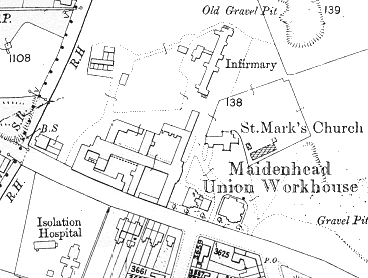
Cookham workhouse site, 1910.
The entrance block was a long two-storey range facing east.
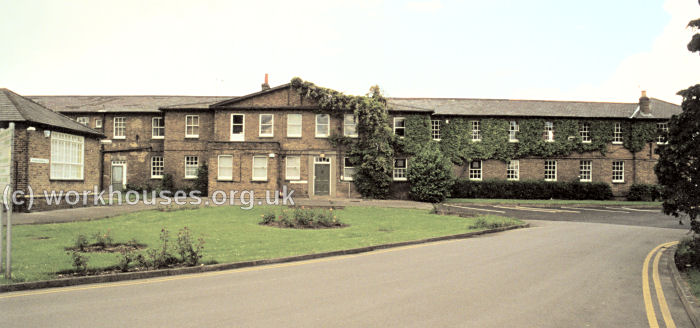
Cookham entrance range from east, 2000.
© Peter Higginbotham.
Behind this, four accommodation wings radiated from a central hub, creating separate yards for the different classes of inmate.
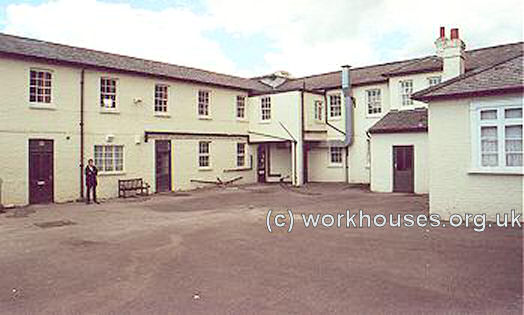
Cookham accommodation blocks from south-west, 2000.
© Peter Higginbotham.
From observation windows in the central hub, the activities in each yard could be viewed by the workhouse staff.
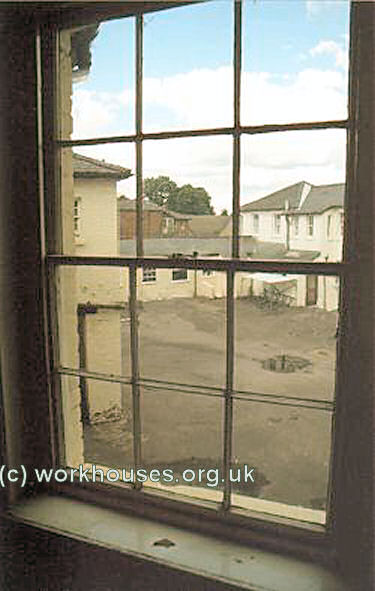
Cookham, view from observation window, 2000.
© Peter Higginbotham.
In the mid-1890s, presumably coinciding with the Union's change of name to become Maidenhead Poor Law Union, new buildings were erected the site entrance. To the right of the entrance, was a block containing the Guardians' board-room.
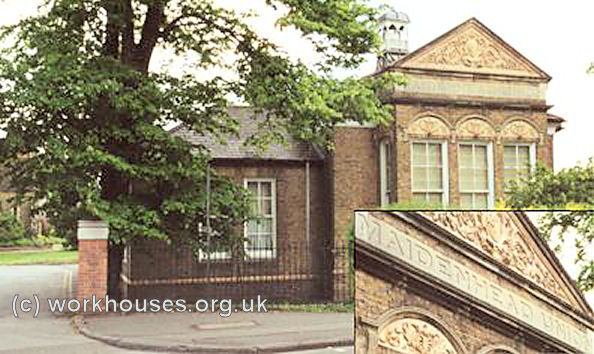
Cookham new boardroom from south, 2000.
© Peter Higginbotham.
To the right of the entrance were a porter's lodge and receiving wards for new inmates.
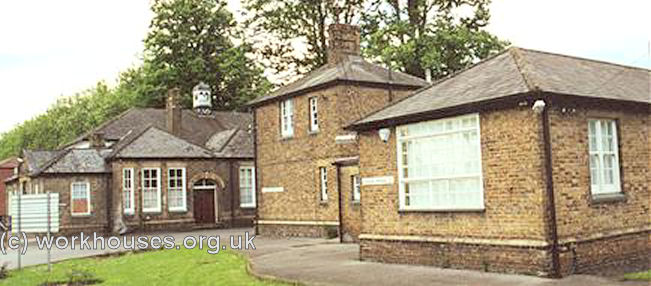
Cookham entrance buildings from north-west, 2000.
© Peter Higginbotham.
To the east of the main workhouse stands St Mark's Church dating from 1873 and built in the Victorian Gothic style.
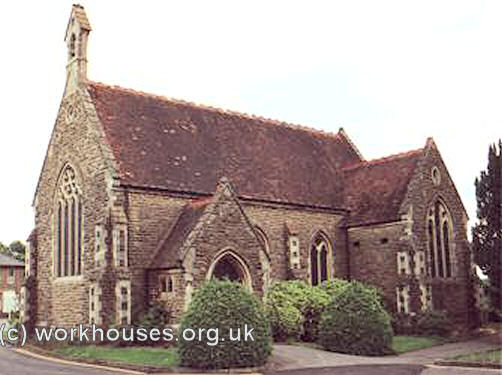
Cookham, St Mark's Church from south-west, 2000.
© Peter Higginbotham.
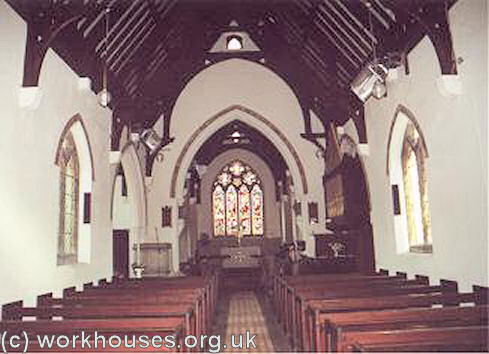
Cookham St Mark's Church interior, 2000.
© Peter Higginbotham.
The former workhouse buildings are now mostly used as administrative accommodation for St Mark's Hospital.
Scattered Homes
In the early 1900s, the Maidenhead Union operated a number of scattered homes for pauper children at: Cookham Rise, Cookham; Leopold House, Grenfell Road, Maidenhead; The Gables, Court House Road, Maidenhead; Boyne Hill, Maidenhead; Furze House, Cannon Court Lane, Furze Platt.
Staff
Inmates
Records
Note: many repositories impose a closure period of up to 100 years for records identifying individuals. Before travelling a long distance, always check that the records you want to consult will be available.
- Berkshire Record Office, Berkshire Record Office, 9 Coley Avenue, Reading, Berks RG1 6AF. Holdings include: Guardians' minute books (1835-42, 1845-1930); Admissions and discharges (1836-1850); Indoor relief lists (1836-42, 1854-1932); Births (1836-68); Deaths (1836-67); Assessment Committee minutes (1881-1901); etc.
Bibliography
- Higginbotham, Peter Workhouses of London and the South East (2019)
Links
- None.
Unless otherwise indicated, this page () is copyright Peter Higginbotham. Contents may not be reproduced without permission.


